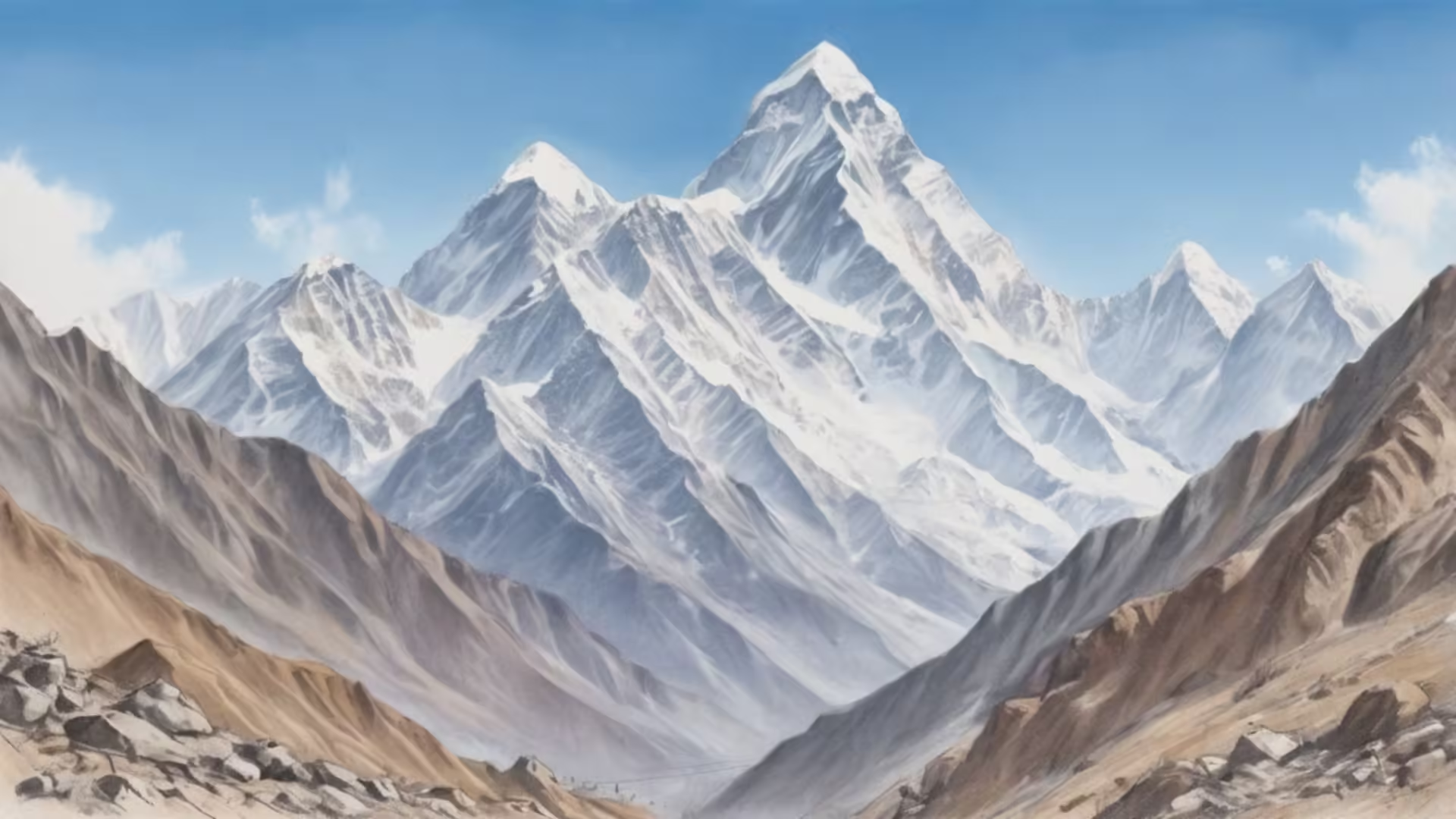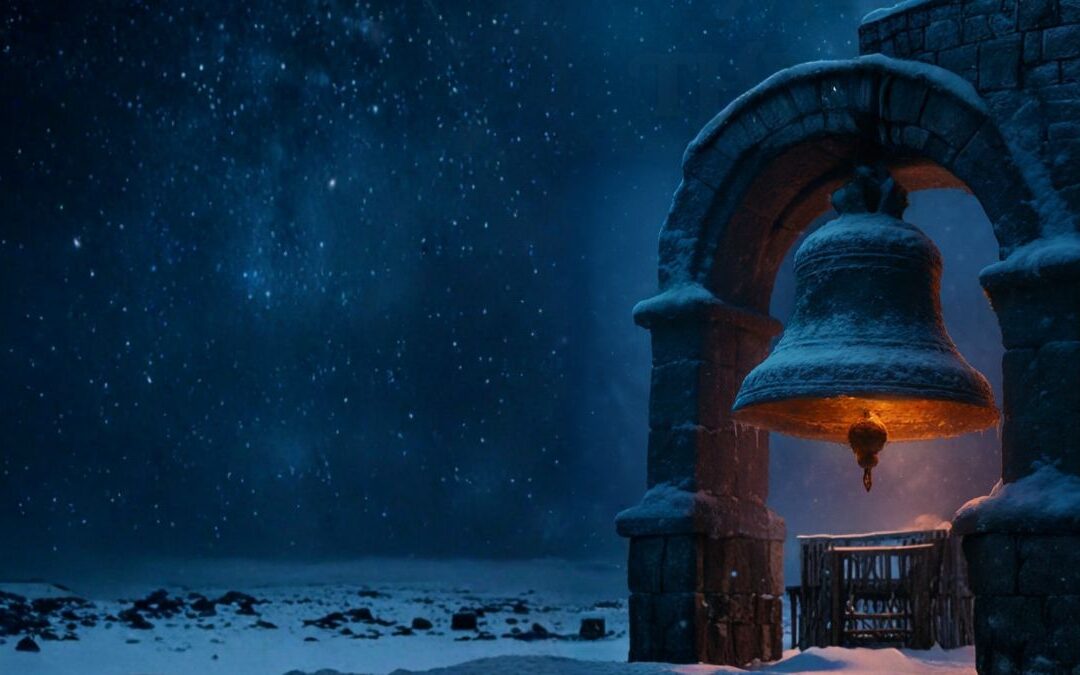- The Gist
- The Geography of the Himalayas
- The Unique Formation of the Himalayas
- Biodiversity and Unique Ecosystems
- Cultural Significance of the Himalayas
- The Himalayas and Global Climate
- Trekking and Tourism in the Himalayas
- The Himalayas in the Modern World
- The Himalayas as a Natural Wonder
- Let’s Talk
- Let’s Learn Vocabulary in Context
The Gist
The Geography of the Himalayas
The Himalayas stretch over 2,400 kilometers (1,500 miles), passing through India, Nepal, Bhutan, China, and Pakistan. This vast mountain range separates the Indian subcontinent from the Tibetan Plateau, creating a natural boundary between South and Central Asia. The word “Himalaya” comes from Sanskrit, meaning “abode of snow,” a fitting name considering the snow-covered peaks that dominate the range. Rising sharply from the plains, these mountains reach breathtaking altitudes, with over 100 peaks soaring above 7,000 meters (23,000 feet).
The Himalayas are home to the world’s tallest mountain, Mount Everest, which stands at 8,848 meters (29,029 feet). Known in Tibetan as Chomolungma and in Nepali as Sagarmatha, Mount Everest attracts climbers from around the world, challenging their limits in extreme conditions. Yet Everest is only one of many peaks in the region; other notable mountains include Kanchenjunga, Lhotse, and Makalu, each holding its own allure and significance.
The Unique Formation of the Himalayas
The Himalayas were formed around 50 million years ago due to the collision of the Indian and Eurasian tectonic plates. As these plates collided, the land was forced upward, creating the towering peaks we see today. This geological process is still active, and the Himalayas continue to rise by a few millimeters each year. This ongoing uplift means the region is prone to earthquakes and landslides, which reshape the landscape over time.
The Himalayas’ formation has given rise to unique geological features, including steep ridges, deep valleys, and glacier-filled basins. The vast network of glaciers feeds some of Asia’s major rivers, including the Ganges, Indus, and Brahmaputra. These rivers provide water to millions of people downstream, making the Himalayas an essential water source and lifeline for much of the continent.
Biodiversity and Unique Ecosystems
Despite the harsh conditions at high altitudes, the Himalayas host a rich diversity of plant and animal life. The range covers various ecosystems, from lush subtropical forests at lower elevations to alpine meadows and arid high-altitude deserts. This diversity makes the Himalayas a biodiversity hotspot, with numerous endemic species that can’t be found anywhere else in the world.
Among the Himalayan wildlife are the elusive snow leopard, red panda, Himalayan monal (a colorful pheasant and the national bird of Nepal), and the Tibetan antelope. The region is also home to medicinal plants that play an essential role in traditional Himalayan medicine. These ecosystems are highly sensitive to climate change, which threatens the survival of many species and the overall health of the region.
Cultural Significance of the Himalayas
The Himalayas are not only a natural wonder but also a cultural and spiritual hub. For centuries, these mountains have been revered in Hinduism, Buddhism, and other religions. In Hindu mythology, the Himalayas are considered the abode of Shiva, one of the principal deities. In Buddhism, the Himalayas are viewed as a place of spiritual refuge, attracting monks, nuns, and pilgrims seeking peace and enlightenment.
This cultural richness is also reflected in the daily lives of the people who live in the Himalayan region. Indigenous communities, including the Sherpas, Gurung, and Ladakhi people, have adapted to the challenging conditions of high-altitude life. These communities preserve unique traditions, languages, and ways of life that are closely tied to the mountains. Their spiritual connection to the land has also influenced sustainable practices that help conserve the environment.
The Himalayas and Global Climate
The Himalayas play a crucial role in the Earth’s climate system. Known as the “Third Pole,” the region holds vast amounts of fresh water in its glaciers, second only to the Arctic and Antarctic. These glaciers act as a natural reservoir, slowly releasing meltwater that sustains rivers during dry months. However, climate change is accelerating glacier melting, which threatens water availability for millions of people.
As glaciers recede, the region faces a higher risk of glacial lake outburst floods, where melting water builds up in lakes and suddenly bursts, causing destruction downstream. This issue impacts not only local communities but also countries far beyond the Himalayas, as the rivers fed by Himalayan glaciers are critical for agriculture, drinking water, and hydroelectric power.
Trekking and Tourism in the Himalayas
The Himalayas attract adventurers, trekkers, and nature enthusiasts from all over the world. Some come to scale the daunting peaks, while others prefer trekking through scenic trails, such as the Annapurna Circuit in Nepal or the Markha Valley Trek in India. These treks offer stunning views of snow-capped mountains, ancient monasteries, and remote villages.
Tourism brings significant economic benefits to the region, providing jobs and income for local communities. However, it also brings challenges. Popular trekking routes can suffer from environmental degradation, litter, and habitat disturbance. Efforts are being made to promote sustainable tourism, encouraging visitors to respect the environment and support conservation initiatives that protect the natural and cultural heritage of the Himalayas.
The Himalayas in the Modern World
As the world’s tallest mountain range, the Himalayas remain a powerful symbol of nature’s grandeur and resilience. Yet, the mountains face modern challenges that require a careful balance between development and preservation. Climate change, tourism, and the growing demand for resources are putting pressure on the region’s ecosystems and communities.
International efforts are underway to address these issues, including environmental agreements between countries that share the Himalayas. Research on glacier health, biodiversity, and climate adaptation is also vital for the sustainable future of this unique region. The Himalayas are not just a physical barrier but a reminder of the interconnectedness of natural systems and the importance of protecting them for future generations.
The Himalayas as a Natural Wonder
The Himalayas, the Roof of the World, are much more than towering peaks—they are a world within themselves, full of life, culture, and geological significance. This mountain range continues to inspire awe and reverence, symbolizing both the beauty and fragility of our planet. Whether admired from afar or explored up close, the Himalayas remind us of nature’s power and the need to cherish and protect these extraordinary landscapes for generations to come.
Let’s Talk
So, the Himalayas. Can we just take a moment to appreciate the fact that there’s a place on Earth so majestic, people actually call it “The Roof of the World”? I mean, what could possibly top that? These mountains aren’t just tall—they’re legendary. But beyond the sheer height and stunning landscapes, there’s so much more to these mountains that most of us don’t get to see or hear about. It’s easy to think of the Himalayas as just an extreme tourist destination or a background for spiritual retreats, but they’re actually woven into the lives and cultures of millions of people.
Let’s think about what it would be like to live in the shadow of these peaks. For the communities who call this place home, the Himalayas aren’t just a scenic view. They’re the source of water, the foundation of ancient traditions, and even a kind of teacher. Imagine having to climb steep trails daily just to get to the nearest village or market. It’s like getting a workout and a breathtaking view, but you’re also building a deep connection with the land around you.
And have you ever thought about the spiritual pull of a place like the Himalayas? These aren’t just mountains—they’re sacred spaces for many. In Hinduism and Buddhism, the Himalayas are seen as holy, almost like living, breathing entities. Pilgrims make their way through these mountains not to conquer them but to connect with something greater. It’s a different mindset from the adrenaline rush that adventurers seek. You know, it makes you wonder—how often do we actually take time to appreciate nature rather than just snap a photo of it?
On a practical level, the Himalayas are also a lifeline. The glaciers here feed rivers that provide water to millions downstream, all the way through South Asia. It’s mind-blowing to think that a single mountain range can influence life so far beyond its peaks. And yet, this lifeline is under threat from climate change. The glaciers are melting faster, and the impact could be catastrophic for everyone who depends on those rivers. Have you ever thought about how something as far away as the Himalayas could affect your daily life? It’s a reminder of just how connected we all are.
Then, there’s the whole adventure side. Climbing Mount Everest or trekking through the Annapurna Circuit might be on some people’s bucket lists, but the mountains are not just playgrounds. The people who live here have to balance the benefits of tourism with the impact it has on their environment. Imagine your hometown becoming a hotspot for travelers—some of whom may not be as respectful as they should be. It’s a lot to handle. Local communities are working on sustainable tourism efforts to protect the natural beauty and cultural heritage of the area, which is both inspiring and challenging.
So here’s a question: if you had the chance, would you want to experience the Himalayas up close? And would you go for the adventure, the spirituality, or maybe just to see how life flows at the top of the world? It’s one of those places that makes you stop and think about the world and our place in it—just as small as we are, we’re also deeply connected to places and people miles away.
Let’s Learn Vocabulary in Context
Let’s break down some of the words and phrases that came up in exploring the Himalayas. These are words that connect to the beauty, power, and mystery of natural places, but they’re also super useful in everyday conversations about nature, culture, and even personal growth.
First, let’s start with majestic. When we describe something as majestic, we mean it’s impressive, grand, and often inspiring. The Himalayas are majestic, no doubt, but we might use this word for anything that feels grand or awe-inspiring. You could say, “The view from the top of the mountain was absolutely majestic.”
Then we have region. A region is a large area that has some unifying characteristics. The Himalayas are a region with a distinct culture, ecosystem, and geography. In daily life, you might say, “The wine region in France is famous worldwide,” referring to the areas known for vineyards.
Altitude is a great word for talking about height above sea level, especially when we’re discussing mountains or flying. The Himalayas have high altitudes that make the air thinner and colder. You could also say, “The altitude made it harder to breathe during our hike.”
Next, summit. This is the very top of a mountain, but it can also mean the peak or highest point of an achievement. Someone might say, “After years of work, getting that award felt like reaching the summit of my career.”
Spiritual is a word used to describe something related to the soul or the search for deeper meaning. In the Himalayas, many people have spiritual journeys in connection with the mountains. You might use this word if you feel a personal connection to something beyond the physical world, like saying, “Meditation is a spiritual practice for me.”
Pilgrim is another interesting term, which refers to someone on a journey for a religious or spiritual purpose. Many people travel to the Himalayas as pilgrims. In a lighter context, you could even say, “I felt like a pilgrim on a journey for the perfect pizza,” if you’re searching for something important to you.
Glacier refers to a huge, slow-moving mass of ice, often found in mountain regions. The Himalayas have many glaciers that feed rivers and sustain life downstream. You might hear, “The glacier was melting rapidly,” in conversations about climate change.
Then there’s sustainable, a word we use a lot these days to talk about things that can be maintained or preserved over time. The Himalayas face challenges with sustainable tourism. You could also say, “I’m looking for sustainable ways to reduce waste at home,” meaning eco-friendly practices that can last.
Ecosystem describes a community of living things and their environment, all interacting together. The Himalayas host a unique ecosystem with plants and animals adapted to high altitudes. In everyday life, you might hear, “The coral reef is a fragile ecosystem.”
Finally, preserve means to keep something in its original state or protect it from harm. People are working to preserve the natural beauty of the Himalayas. You could say, “I want to preserve my grandmother’s recipes for future generations.”
To think about it further: What’s the most majestic place you’ve ever visited, and did it make you feel any kind of spiritual connection? And what are some ways you think we can preserve unique places for future generations?










0 Comments